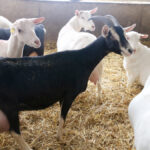We’re all shaking our heads about the excesses the weather has smothered us under in the past 12 months.
And mostly we agree too about the equally unpredictable political excesses that have roiled global trading patterns and devastated commodity prices.
Combined, those two are enough to make us overlook the historic predictability of other key factors, like interest rates and the loonie.
We might forget too how envious previous generations would be at the stability that the decade’s growth in equity has injected into most farm sectors.
Read Also
Editor’s Note: No pressure
What is your playbook going into this year’s crop? Not an easy question to answer right now, given the global…
Still, there’s no question the nearby future of farming has risks and dangers, and these seem to be getting more unpredictable, not less.
Still, whether you’re interested in the full program or not, I do think the numbers I write about in ‘Farm Fit‘ in our May/June issue of Country Guide, are worth a close examination.
I feel I’m forever saying that the ag economics departments at Canadian universities are letting us down, as are farm and industry organizations that don’t give them more grief about it.
Surely our farm economists should be studying and reporting on the economics of farming, and also on the choices that any farmer will tell you are the biggest choices they make — about incorporation, about financing, about succession, and more.
At least in Farm Fit you will see numbers from AME and BDO on establishing standardized financial benchmarks to help Canada’s farmers evaluate their performance.
Their data isn’t perfect, and yes, it is produced by people with business interests, so you have to keep that in mind. But in the current vacuum, it is a badly needed window into our farm sector, with a number of key conclusions.
The most obvious is about the difference in the profitability of farms that look identical from the roadside. We’ve all guessed at that in past, but now we have numbers.
Can benchmarking help you diagnose any areas where you’re falling short, and help you make up lost ground? I don’t know. That’s your decision, but the article is worth a read anyway.
But this is what I do believe. I do believe that while size has impact, it is not determinative. The AME-BDO work says this too. Small, well-run operations will be part of our future.
Second, I believe the conclusion that the future is going to require step-changes, not just getting incrementally more efficient at what you’re already doing.
So also read The Way It Happens, and pause over the comments from the Aitkens and from Lydia Carpenter and Wian Prinsloo. And read about Owen Fijala later in our May/June 2019 issue, and thumb through some of your back issues too.
The future, for all its uncertainties, is getting clearer.
Are we getting it right? Let me know at [email protected].













